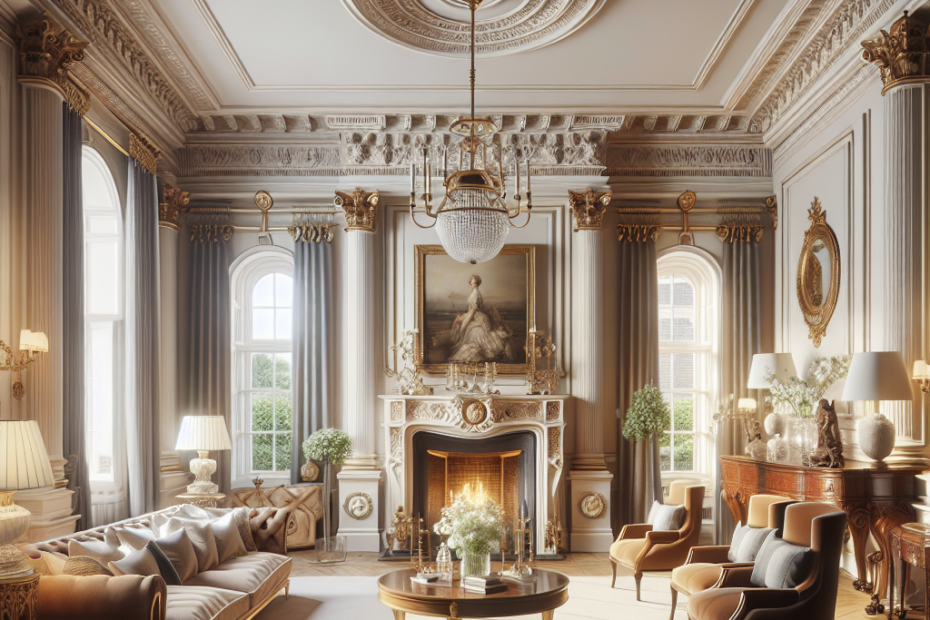Exploring the Sophisticated World of Georgian Interior Design
In the elegant homes of the 18th century, a particular style began to grace the interiors, leaving a legacy that would endure for centuries. Georgian interior design, known for its symmetry, proportion, and elegance, flourished during the reigns of the British monarchs George I through George IV, spanning the years 1714 to 1830. Today, many people still draw inspiration from its enduring appeal, incorporating aspects into modern homes.
The Foundations of Georgian Interior Design
Georgian interior design is deeply rooted in classical architecture and design elements from ancient Greece and Rome. They often featured harmonious proportions, balanced layouts, and an emphasis on order and symmetry. Many homes of this era were designed in accordance with the principles espoused by the architect Andrea Palladio, whose work was revered during the period.
Characterized by its restrained yet elegant design, Georgian interiors typically include paneled walls, refined moldings, and muted color palettes. The wealthy commissioned large country houses and smaller urban homes, both of which were marked by a sense of grace and refinement. Fireplaces often served as the focal point in rooms, topped with decorative mantels and adorned with gilded mirrors or classic art pieces.
Distinctive Features of Georgian Homes
One might walk into a Georgian-style home and immediately notice the spacious layout and high ceilings. This was intended to reflect the grandeur and sophistication of the time. Windows often featured large sash designs with decorative pediments, allowing ample natural light.
| Feature | Description |
|---|---|
| Symmetry | Balanced layouts and harmonious proportions |
| Molding and Paneling | Refined moldings, wainscotting, and paneling |
| Muted Colors | Use of muted, soft color palettes |
| Fireplaces | Ornate fireplaces with decorative mantels |
| Decorative Elements | Use of classical art, mirrors, and wealth of materials |
Modern Interpretations of Georgian Design
In today’s design world, Georgian interiors continue to inspire with their timeless appeal. Designers often incorporate Georgian elements into contemporary spaces to create a fusion of historical and modern aesthetics. For example, many opt for the traditional color schemes and panelings, but update the look with modern furniture pieces and simplified decorations.
According to a report by the National Association of Home Builders, over 25% of new homes built in the past five years incorporate some elements of historical styles, with Georgian design among the most popular choices (National Association of Home Builders, 2022).
Tips for Bringing Georgian Design into Your Home
If looking to add a touch of Georgian elegance to their living space, they needn’t undertake an entire renovation. Simple steps such as adding crown moldings, installing reproduction fireplaces, or selecting classical paint colors can instantly evoke the feel of a Georgian home.
Adding antique or reproduction furniture can also enhance the Georgian aesthetic. Look for pieces with elegant lines and timeless beauty. Decorative elements like mirrors, candlesticks, and classical art are also excellent choices for pulling the overall look together.
Key Takeaways
- Georgian interior design is characterized by symmetry, elegance, and classical inspiration.
- Distinctive features include balanced layouts, muted color palettes, and ornate fireplaces.
- Many contemporary designs draw from Georgian elements to enhance aesthetic appeal.
- Simple updates like moldings and color changes can introduce Georgian style into modern homes.
- Georgian design remains popular in new home constructions and interior designs.
FAQs
- What defines Georgian interior design?
- Georgian interior design is defined by its classical proportions, symmetry, and refined elements such as paneled walls, muted colors, and decorative fireplaces.
- How can one incorporate Georgian elements into a modern home?
- Incorporate Georgian elements by adding crown moldings, antique furniture, and using classic paint colors. Decorative items such as mirrors and candlesticks also help.
- Is Georgian architecture still relevant today?
- Yes, Georgian architecture remains relevant today, with many new homes incorporating elements from this style due to its timeless appeal.
- What color schemes are typical in Georgian design?
- Georgian design typically uses muted and soft color palettes such as creams, taupes, and pastels.
- Are there any modern design trends drawn from Georgian styles?
- Yes, modern design often incorporates Georgian elements such as symmetry, refined decor, and traditional moldings to add elegance and historical charm.
